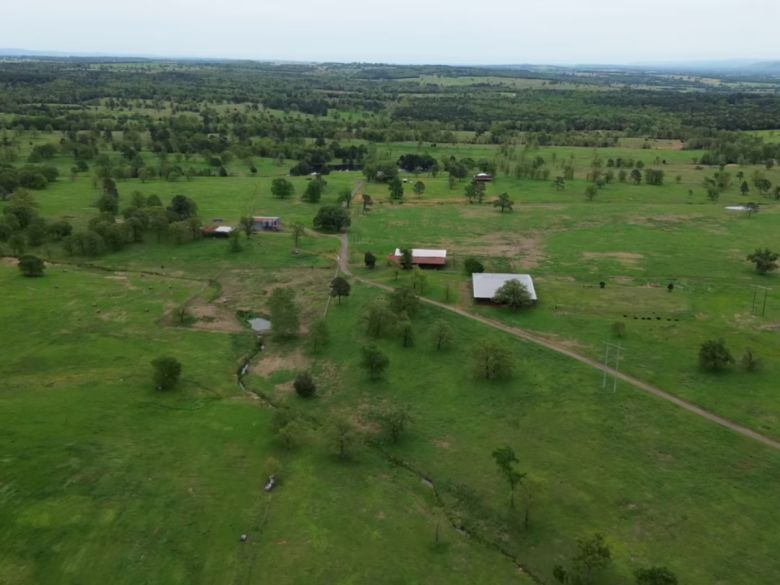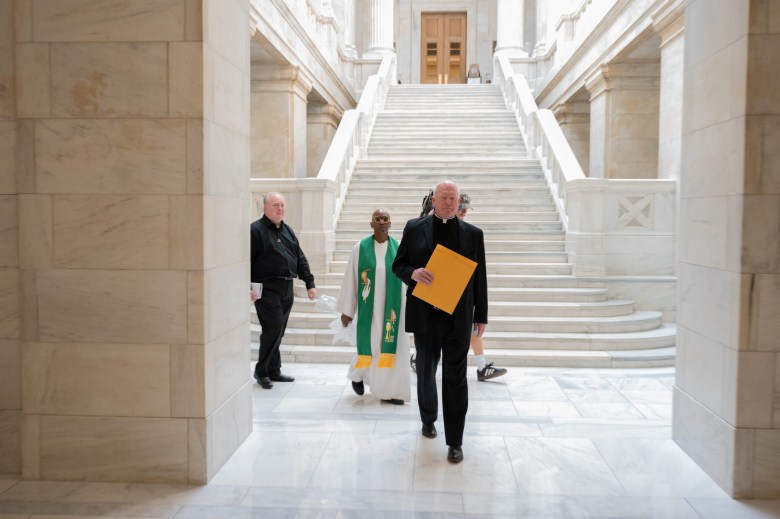Utility giant Entergy Arkansas is proceeding with a contentious rate rise enabled by a new state law that Entergy lobbied for this spring, as the company reveals intentions to pursue the development of a natural gas plant to replace its old coal plant near Pine Bluff.
Entergy, which supplies over 740,000 customers with a large portion of the electricity in eastern and central Arkansas, stated in early July that it would be looking to build a natural gas facility next to the White Bluff coal plant in Redfield. The Jefferson Power Station will be the name of the new facility. Although the business has not yet submitted an application to the Arkansas Public Service Commission, an Entergy Arkansas representative informed the Arkansas Times that they would probably do so in August. In Arkansas, utilities are governed by the Public Service Commission.
On a website that informs the public about the project, the corporation is asking for public input on the proposed natural gas facility. Entergy anticipates that the new plant will be finished and put into service in early 2029, with construction starting in the second quarter of 2026.
Energy decided to close the White Bluff plant in 2028 following a deal with the Sierra Club and other environmental groups. The expansion of power-intensive industries like data centers is predicted to cause Arkansas’s electricity demand to quickly exceed its supply in the upcoming years, necessitating the development of additional electricity sources. However, Entergy’s 2024 Integrated Resource Plan, which details the company’s objectives for future energy planning, also includes a commitment to achieve a net-zero carbon emission output by 2050.
Natural gas proponents frequently argue that because it emits less carbon dioxide than burning coal, it is a comparatively clean fossil fuel. However, detractors point out that the production of gas does release a significant quantity of methane, a powerful gas that warms the earth.
Glen Hooks, policy manager at Delta Audubon, stated that although natural gas is cleaner than coal, it is still not clean. More fossil fuel plants cannot be built if we are to address climate change in a significant way. It contradicts both their declared objectives and Audubon’s objectives.
“I’m a little disappointed that they are building a natural gas plant near the site of the White Bluff plant they are retiring, but Entergy deserves some credit for building a whole lot of solar in the state of Arkansas,” Hooks said. After years and years of that coal plant chugging away, they ought to have constructed more solar to purify the air.
The Independence coal plant near Newark, which is also operated by Entergy, and the White Bluff coal plant generated the second-highest carbon emissions in the state in 2023, according to the most available data from the Environmental Protection Agency.
During his tenure at the environmental organization in the 2010s, Hooks was involved in the settlement between Entergy and the Sierra Club. Additionally, he expressed his wish that Entergy will give construction of transmission infrastructure more priority in order to import clean energy from other states into Arkansas.
Entergy Arkansas projected that it would put 2,500 megawatts of solar energy capacity online by 2031 in its resource plan. However, once the White Bluff and Independence coal facilities are shut down as a result of the Sierra Club settlement agreement, the business also projected that it will add an additional 1,100 megawatts of natural gas capacity while losing around 1,000 megawatts of coal capacity.
Entergy Arkansas is pursuing a new rider that may significantly raise electricity prices for their almost 740,000 customers in order to help pay for the natural gas buildout, in addition to the announcement of the new Jefferson gas plant. The contentious Generating Arkansas Jobs Act, which the state Legislature enacted this spring, makes the charge—known as a strategic investment rider—possible. The new tariff proposal will be heard by the Public Service Commission on September 23.
In Entergy’s application for the new rider, Caroline McNeal, a senior staff rate analyst, stated that the proposal will not yet result in a rate rise for customers.
The first SIR [strategic investment rider] Rider rates will be set through the inaugural March 2026 Annual Update for qualifying Strategic Investments, according to McNeal’s application, which aims to secure Commission approval of the tariff’s operational framework. The real rate rise that customers may encounter won’t be known until March 2026, when utilities utilizing the new policy can seek for a yearly rate hike. Entergy is requesting permission from the commission to create a strategic investment rider.
Although the new rule will make it more difficult for the commission to reject planned hikes, utilities will still be able to raise the rate in each subsequent year, provided they receive commission approval.
If the commission accepts the new rider, it will be applied differentially to residential, commercial, and industrial ratepayers, according to Lauren Waldrip, executive director of the Arkansas Advanced Energy Association. She added that if utilities start filing for a lot of qualifying infrastructure improvements, the costs of the strategic riders could start to mount for consumers because many kinds of infrastructure upgrades might be considered strategic investments under the law.
In order to acquire the money required to develop new natural gas facilities as well as transmission and distribution infrastructure, the rider will let utilities to increase power prices on consumers both upfront and during the building process. It will assist utilities in taking out smaller loans to finance upgrades. Prior to the reform, utilities would raise customer rates when the infrastructure was finished in order to recover the cost of their new construction.
According to an Entergy representative, the proposed rate schedule enables us to keep offering our customers dependable and reasonably priced electricity while promoting economic growth that benefits Arkansas and the communities we serve. The representative pointed out that Entergy’s rates are far lower than the national average and that commission evaluation and approval would still be required for all investments.
Additionally, the new rule caps rider income increases, enabling utilities to hike rates up to 10% below the national average for all sectors. As of December 2024, the average for all sectors in Arkansas was 9.22 cents per kilowatt-hour, whereas the national average is 12.89.
The law places strict restrictions on the use of the strategic investment policy for the growth of solar energy and specifically relates to natural gas building. It prohibits utilities from developing wind energy on the rider.
Under the leadership of Sen. Jonathan Dismang (R-Searcy), the bill’s sponsor, supporters contended that rising demand in the upcoming years will drive up electricity prices in Arkansas anyway. The new law allows utilities to borrow less money to pay for construction, they said, which will save ratepayers money in the long term.
The proposal was supported by representatives of Southwestern Electric Power Company, Entergy, and numerous electric cooperatives that serve rural areas of the state. The bill was well received by experts in economic growth as well. Hugh McDonald, the former CEO of Entergy Arkansas and the current Commerce Secretary, told Arkansas Business that encouraging the expansion of future data centers was a major driving force behind the utility reform measure. In the upcoming years, there are plans to build three sizable data centers in Little Rock, Conway, and West Memphis.
However, the law, which was enacted with bipartisan support and by a significant margin, raised severe concerns among critics, including the Arkansas Advanced Energy Association, the Southern Renewable Energy Association, and environmental organizations in Arkansas. They contend that the bill severely curtailed the Public Service Commission’s authority to monitor rate hikes, potentially resulting in increased expenses for consumers. Some Arkansans told lawmakers during the legislation’s debate that they were worried about the lack of openness regarding the potential increase in their monthly electricity rates should these riders be passed.
Unlike SWEPCO, which is now proposing to hike rates on customers in Northwest Arkansas, utilities will be able to boost their costs annually through the strategic investment rider without having to go through a formal rate case. The Public Service Commissioners will still have to approve the updates, but there will be fewer oversight requirements.
We are paying this giant corporation, Entergy, up front to build a power plant before we get any benefits from it, and that doesn t sit well with some people. It s not like they are some poverty-stricken mom and pop business building a power plant; they are one of the largest utilities in the whole nation that apparently needs to start charging us for power before the power is even built, Hooks said. It s hard to know if this advanced billing of customers for power plants that don t exist will lead to cost savings. It s a new creative way to stick it to ratepayers in Arkansas.
It’s dragon-slaying time!
The Arkansas Times, which relentlessly defends the fundamental rights and liberties in our community, stands as a light of truth in an era when critical voices are being silenced more and more. Our commitment to provide uncompromising journalism has never been more important, especially with Arkansas in the center of a broad culture war that is impacting our libraries, schools, and public conversation. We can’t accomplish our goals of defeating dragons and holding those in positions of authority responsible alone. You can guarantee that independent journalism in Arkansas not only endures but flourishes by making a contribution today. We can join the fight and make a difference together.







